Who’s Who Digest of American History
You might say these are some of the most significant and/or influential Americans you may never have heard of. This is obviously not intended as an exhaustive list-
For convenience, they are included here in alphabetical order by first name. (You can also find them listed in the MythAmerica Site Index, ordered by last name.)
Links are provided to articles which feature some of these individuals prominently.
Andrew Goodman (1943-1964),
James Chaney (1943-1964),
& Michael Schwerner (1939-1964)
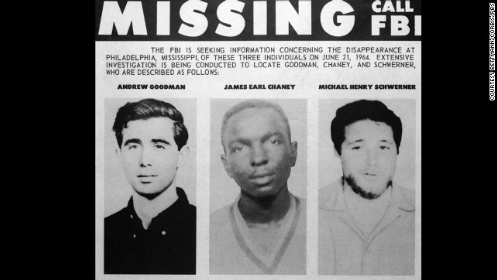
Goodman, Chaney, and Schwerner were young volunteer activists who worked on the "Freedom Summer" campaign in Mississippi in 1964 as part of the Civil Rights Movement. They were primarily involved in working to register blacks in rural areas to vote.
They were murdered together in June that year near Philadelphia MS by members of the Ku Klux Klan with the assistance of a local Deputy Sheriff. Their bodies were buried in an earthen dam and later found by the FBI. No one was ever convicted of their murders, although several co-
The case was reopened in 2004 with new evidence, and a single person involved, Edgar Ray Killen, was found guilty of manslaughter (not murder) and sentenced to 60 years in prison.
Norman Rockwell's famous 1965 painting Murder in Mississippi (Southern Justice) was based on these murders. It was created to illustrate an article in the June 29, 1965 edition of LOOK magazine about injustice in the South which included reference to the deaths of Goodman, Chaney, and Schwerner.
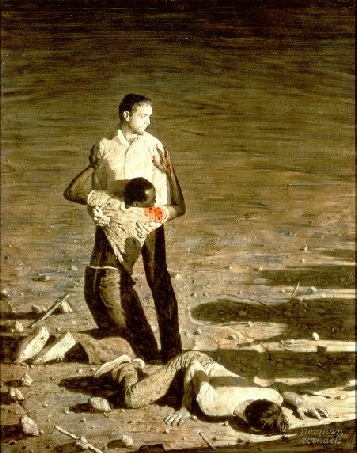
Bull Connor (1897-1973)
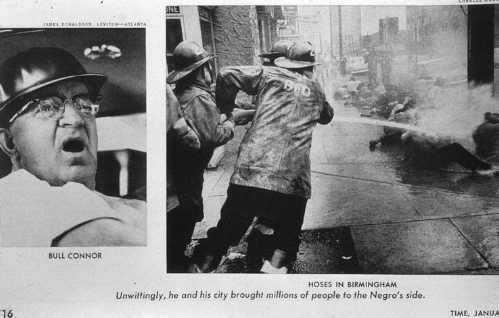
Bull Connor was the Birmingham, Alabama, "Commissioner of Public Safety" (an office that placed him in direct administrative control over the police and fire departments, as well as schools, public health service and libraries) during the Civil Rights era. In 1961 he led resistance to the efforts of the Greyhound Bus "Freedom Riders." In 1962 he ordered 60 parks in Birmingham closed rather than obey a court order to desegregate the parks. And in 1963 he led the resistance against Civil Rights movement efforts to integrate lunch counters, restrooms, fitting rooms, and drinking fountains in Birmingham. His orders to police and fire personnel in May that year to use powerful fire hoses and attack dogs on demonstrators-
Carrie Buck (1906-1983)

Carrie Buck was the focus of a Supreme Court case decided in 1927 that established that "compulsory sterilization" by a state did not violate the Due Process clause of the Fourteenth Amendment. A resident of Virginia which had adopted a sterilization statute in 1924, Carrie was an 18-
Edward Bellamy (1850-1898)

Edward Bellamy, cousin of Francis Bellamy (author of the US Pledge of Allegiance), was an author of Socialist writings. His most famous novel, Looking Backward (published in 1887), described his view of an ideal Utopian Socialist society of the year 2000. It sparked a nationwide movement of "Bellamy Clubs" (or "Nationalist Clubs"), at least 162 of them by 1891. The Club movement died out in a few years, its members mostly absorbed by the growing "Populist Party." [Read more about Bellamy and his book in the article Columbian Legacy on this site.]
Edward Bernays (1891 to 1995…yes, he died at 103)
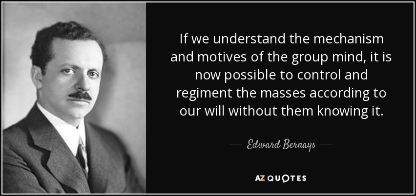
Edward (Eddie) Bernays' was the commonly-
Emmet Till (1941-1955)
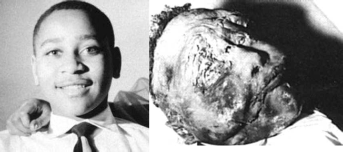
Emmet Till was a fourteen year old African American who was brutally murdered by racists in Mississippi as revenge for "flirting" with a white woman. He lived in Chicago, but was visiting family in the small town of Money, Mississippi. Unfamiliar with the Jim Crow customs of the area, he was not aware of the danger of speaking with familiarity to a white woman he didn't know. He was kidnapped in the middle of the night, beaten viciously, shot to death, and then his body dumped in a river. Although it was common knowledge in the area who had likely done the deed, a white jury found the two men accused not guilty.
Till's mother was so distraught at the horror of how he died that she insisted that his body be returned to Chicago rather than be buried in Mississippi, and that his funeral feature an open casket so that the world could see what had been done to her son. The photos of the mutilated body circulated widely in the media, and caused a firestorm of protest that strongly influenced the growing Civil Rights movement.
A year after the trial, the accused men gave an interview to Look magazine in which they confessed to and described the crime, free from prosecution because of "double jeopardy" laws.
Francis Bellamy (1855-1972)
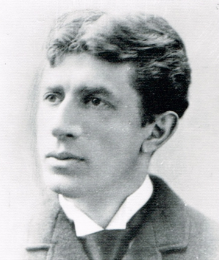
Francis Bellamy, a Christian Socialist minister and author, was best known for writing the American Pledge of Allegiance which was introduced to the country in connection with the Columbian Exposition in Chicago in 1892. He was cousin to Edward Bellamy, Socialist author whose Looking Backward novel, describing a Socialist American Utopia of 2000 AD led to the formation of Bellamy clubs (usually designated "Nationalist Clubs") throughout the country. [Read the story of Bellamy and the Pledge in the article Columbian Legacy on this site.]
Franz Boas (1858-1942)
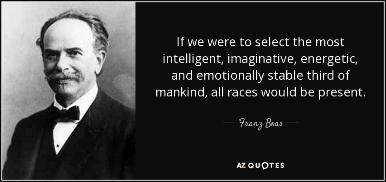
Franz Boas was a German-
His specialty in his early years was making expeditions to Canada and the Northwest US, studying the native cultures and gathering material for anthropological exhibits, such as those at the 1893 Columbian Exposition World's Fair in Chicago. There he introduced the effective use of anthropological "dioramas," a style imitated widely in natural history museums from then on. He championed the idea of "cultural relativism," insisting that it was inappropriate to "impose" the standards of one's own culture on others and judge their customs, institutions, and so on as superior or inferior based on how they lined up with those of one's own culture. "In his 1963 book, Race: The History of an Idea in America, Thomas Gossett wrote that "It is possible that Boas did more to combat race prejudice than any other person in history." (Source) [Read more about Boas in Columbian Kwakiutls on this site.]
George Creel (1876-1953)
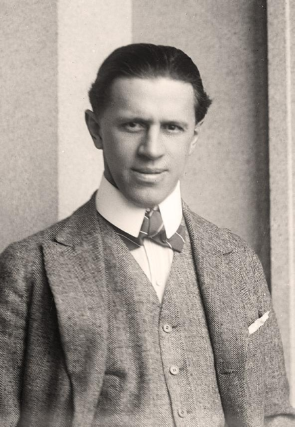
George Creel was an investigative journalist and writer whose is most well-
"The efforts of the CPI were regarded as the greatest public relations effort in history, up to its time. Such a massive, offensive, and multifaceted campaign had never been undertaken before, and the CPI brought to light the power of mass persuasion and social influence at a national level -
George Pullman (1831-1897)

George Pullman was the creator of the "Pullman sleeping car," a feature of train travel from the 1860s through the 1980s. In the heyday of cross-
Pullman created a planned "company town" near his main factory in Illinois, which eventually gained him a reputation as a complete dictator over the lives of his employees. During a drastic economic downturn in 1894, he slashed wages yet increased hours of work at the factory while keeping living expenses in the community high. This led to a nationwide strike against the company, which ended in violence and the death of 34 employees when Pullman persuaded the federal government to send troops to break the strike. [Read about the whole fiasco and its aftermath in the article on this website: The Birth of Labor Day: Rooted in Pullman Hell
Harry H Laughlin
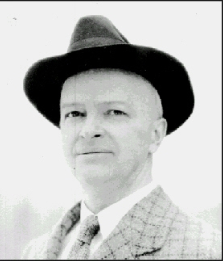
Harry H Laughlin was a major player in the Eugenics movement in America in the early decades of the 1900s. He was head of the Eugenics Record Office from its founding in 1910 until it closed in 1939, an institution dedicated to attempting to gather genealogical information about every person in the US in order to "evaluate" their value to society and decide on matters such as reproduction, with the ultimate goal of limiting-
Ruby Bridges (b.1954)
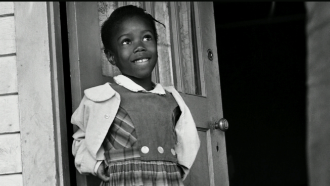
Ruby Bridges was a six-
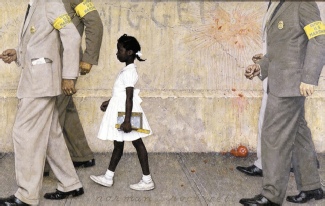
~~~~~
Many more entries coming soon!


Exploring our past to sort out myth from reality
Share this Page on
Facebook or Twitter

These are the voyages of the TimeShip Anachron.
Our Mission: To boldly explore the past, dispelling
mythinformation and mythconceptions
of American History along the way.
 Visit us on Facebook
Visit us on Facebook